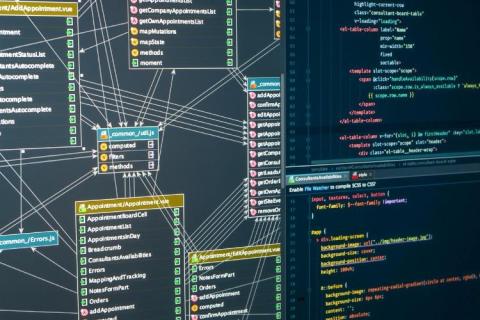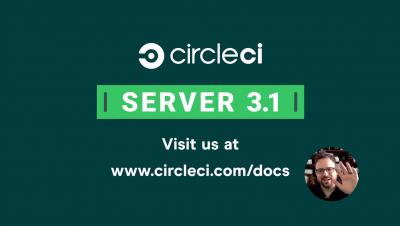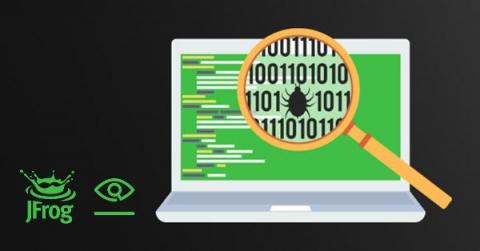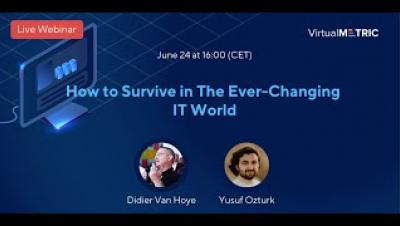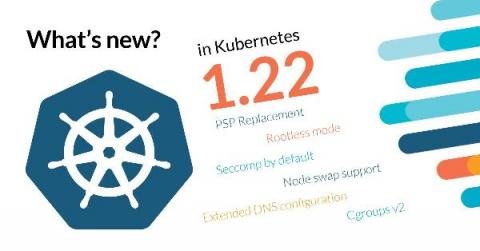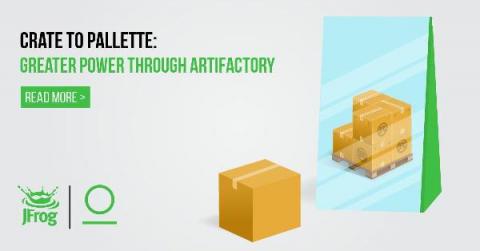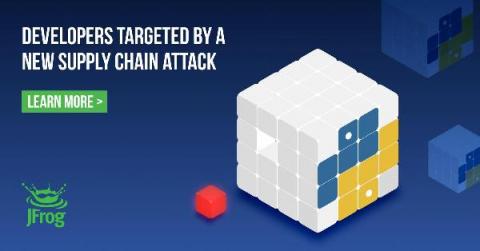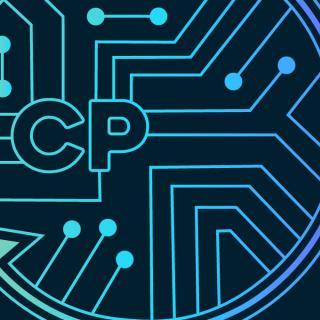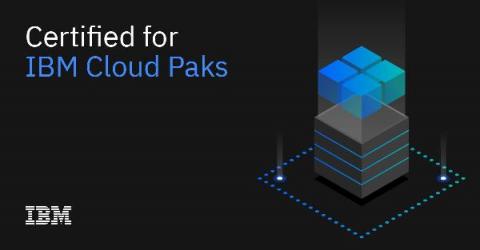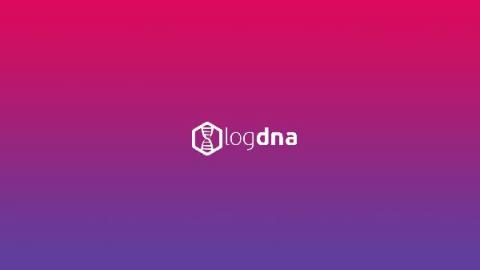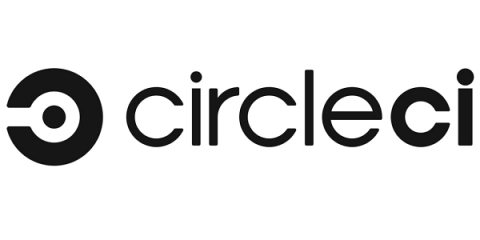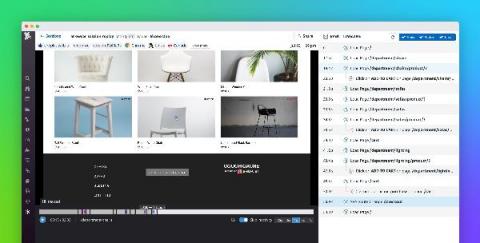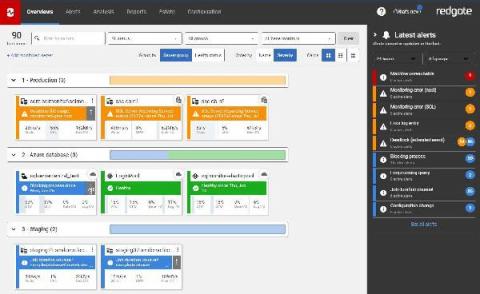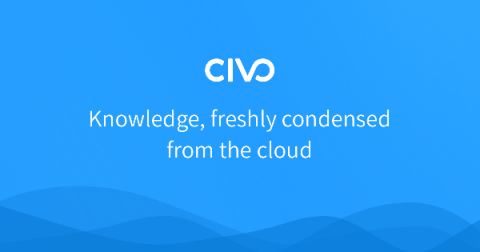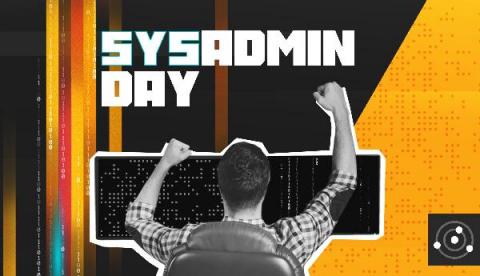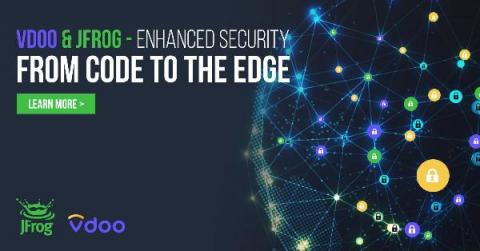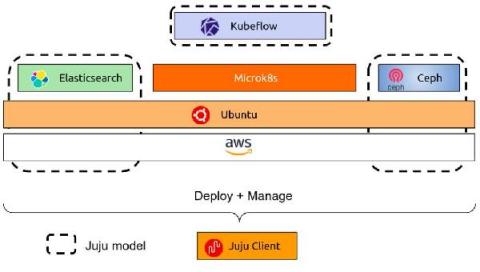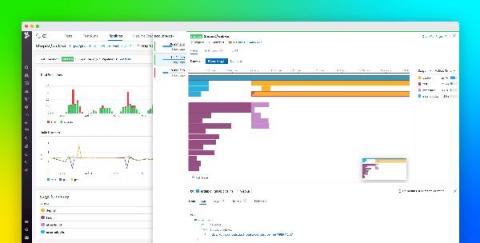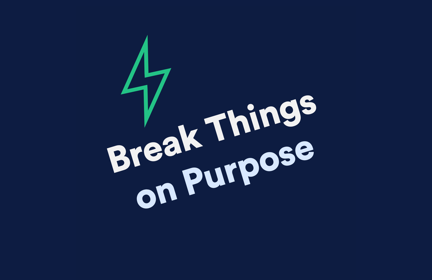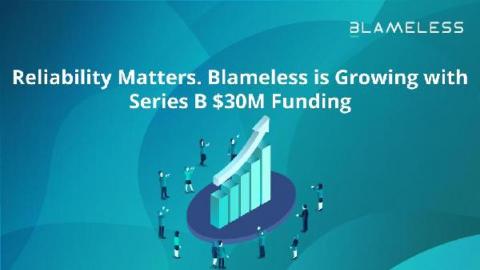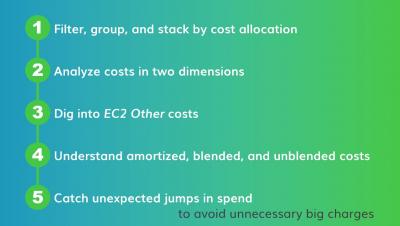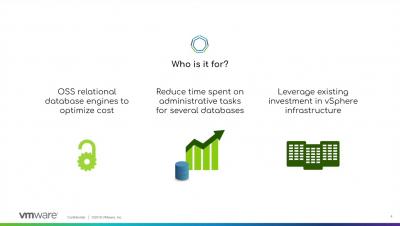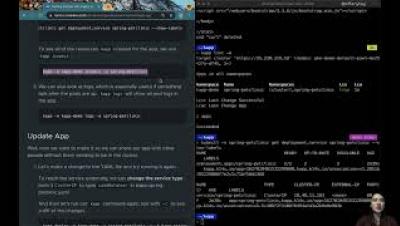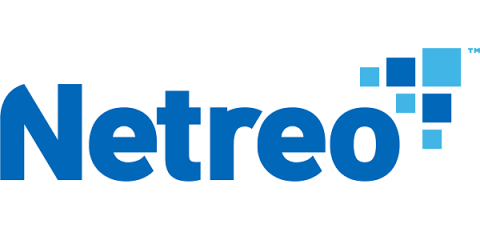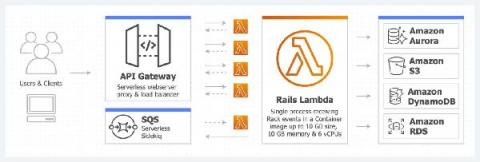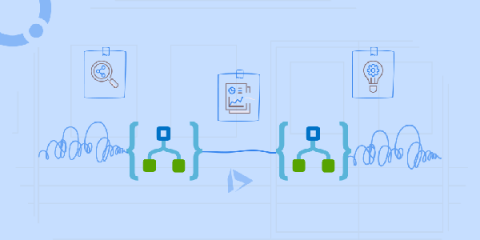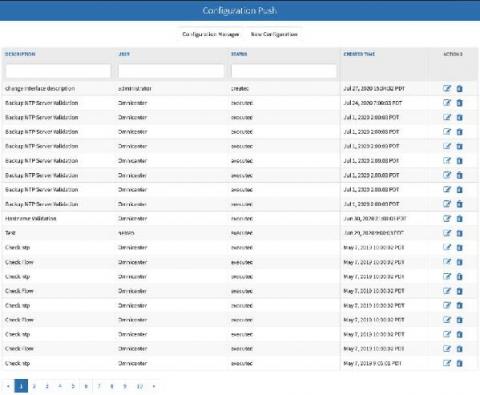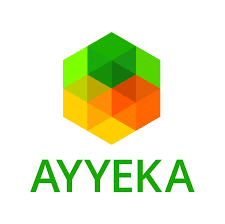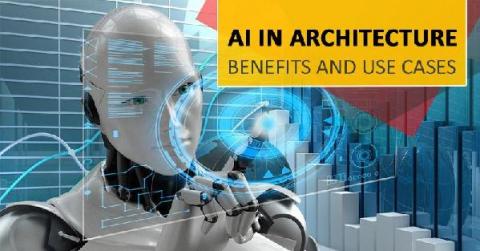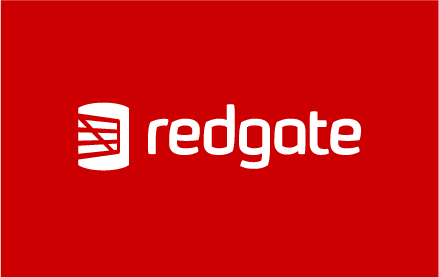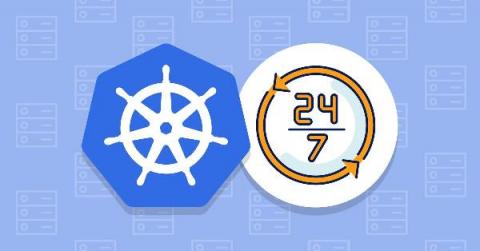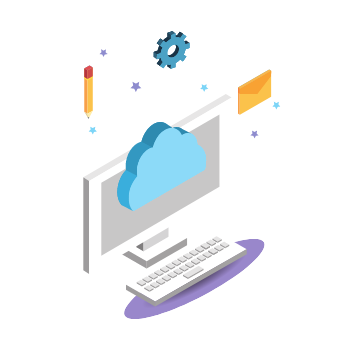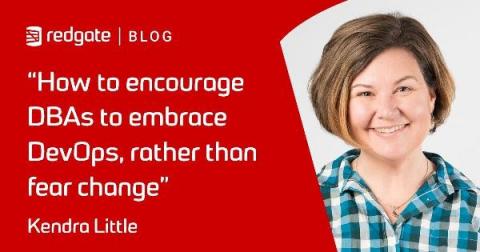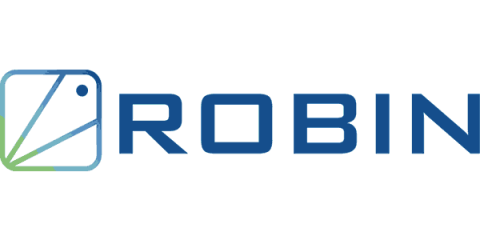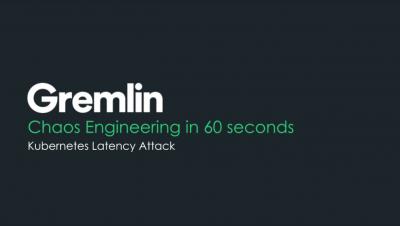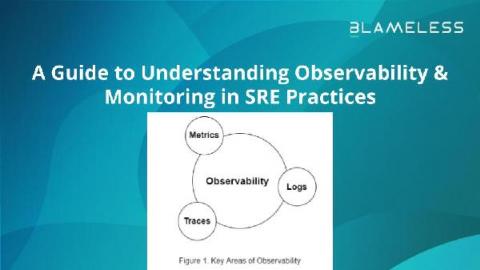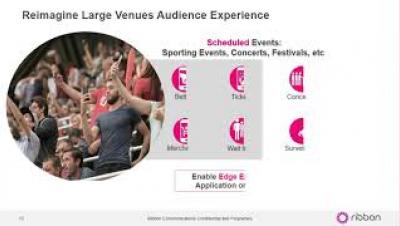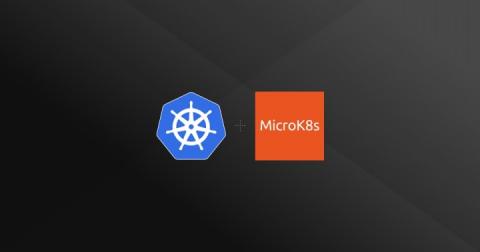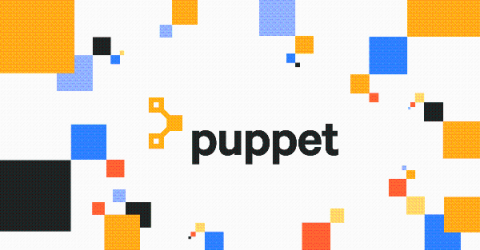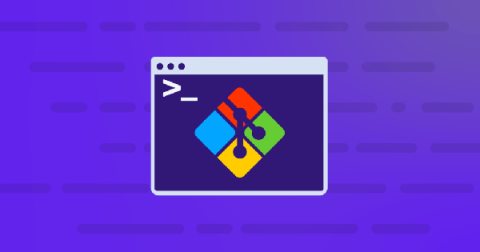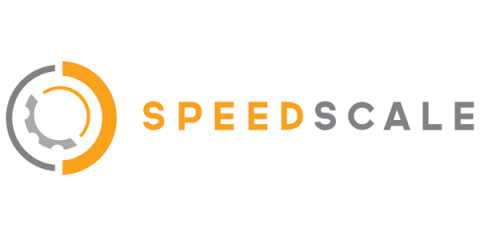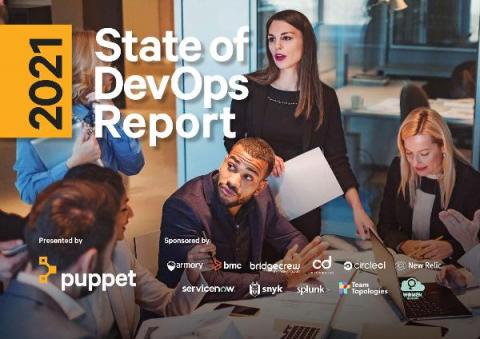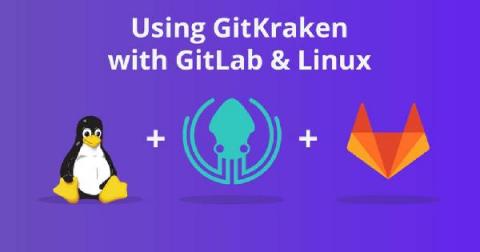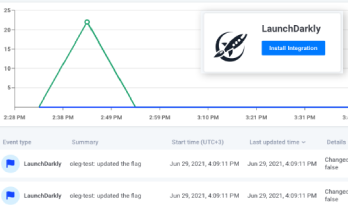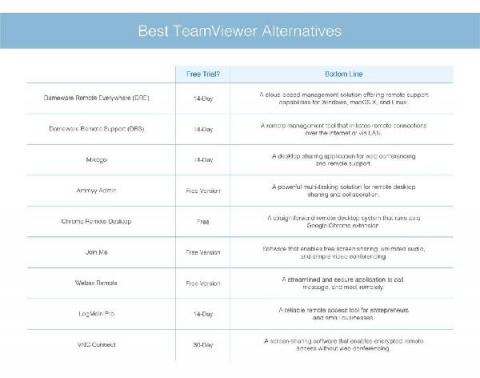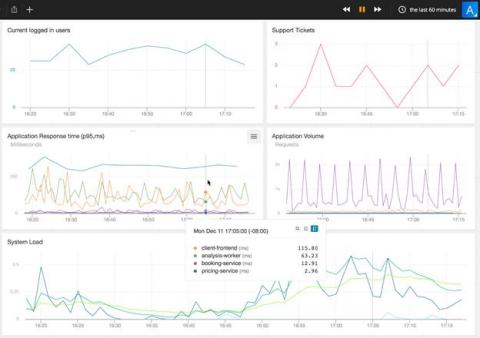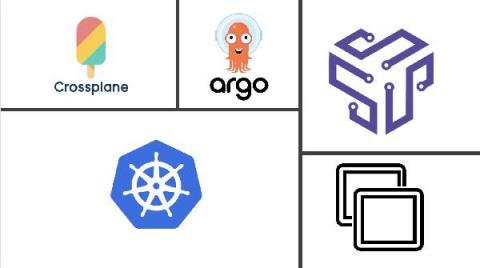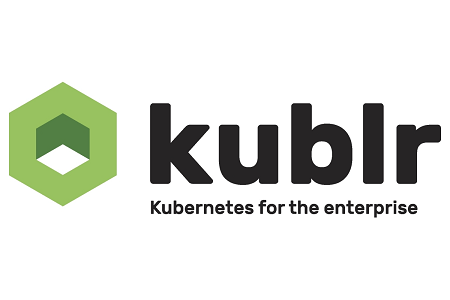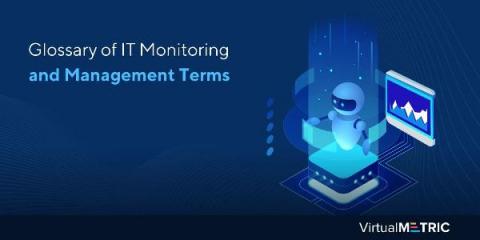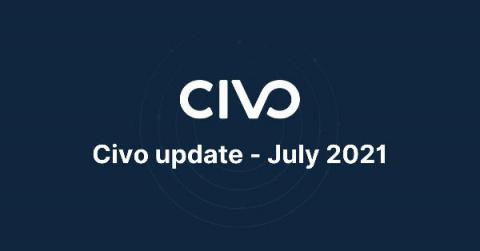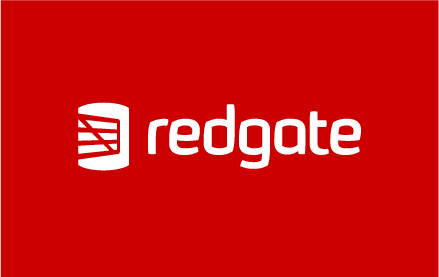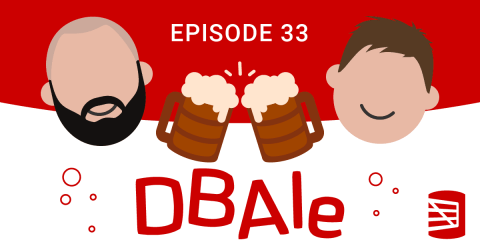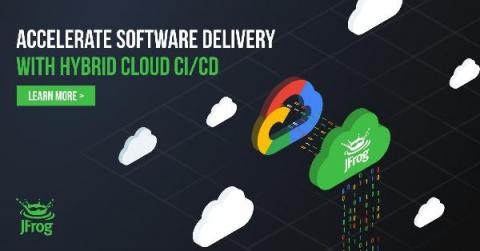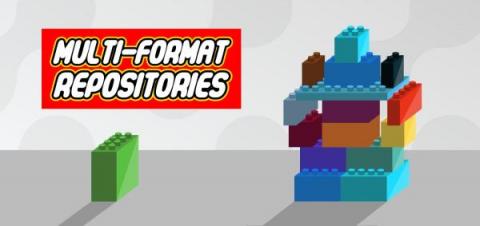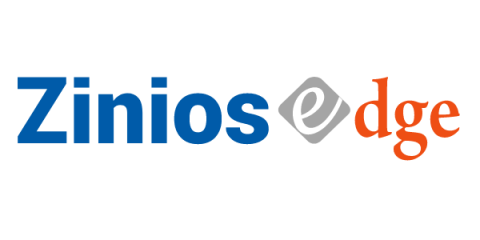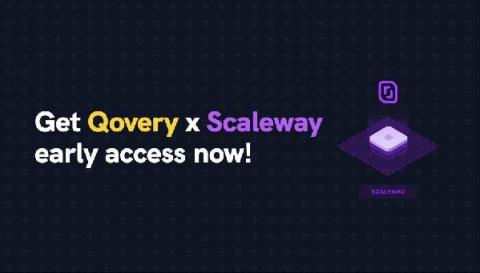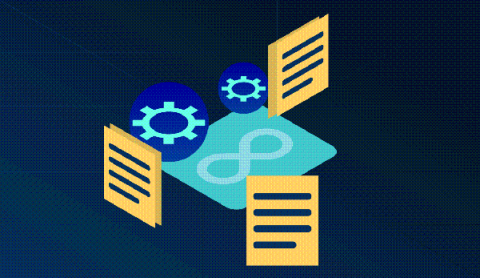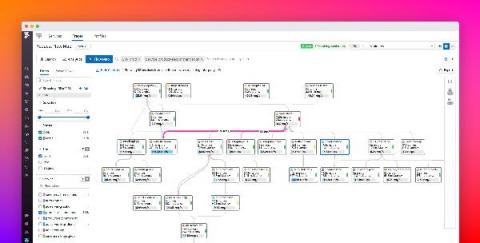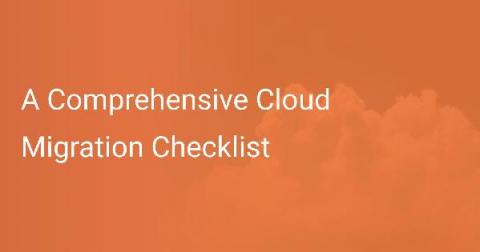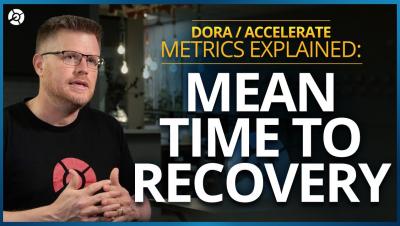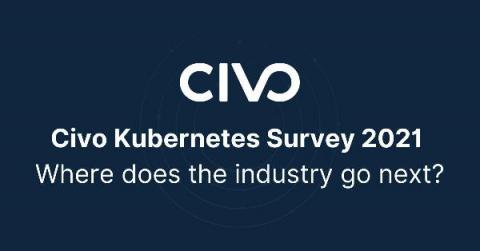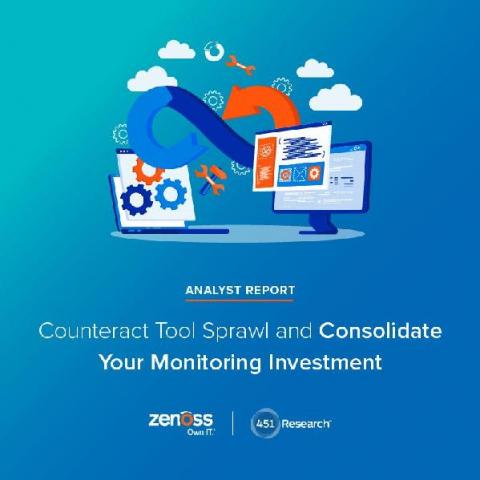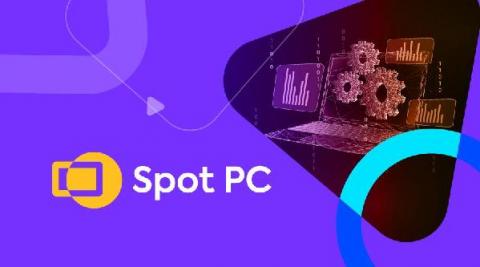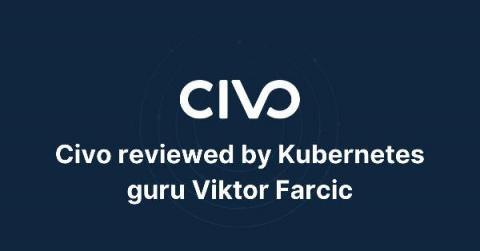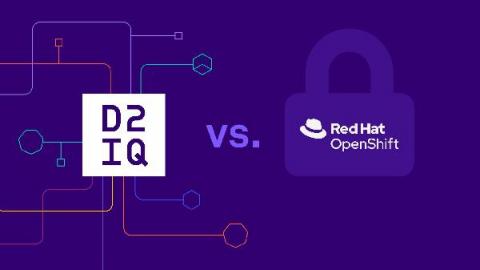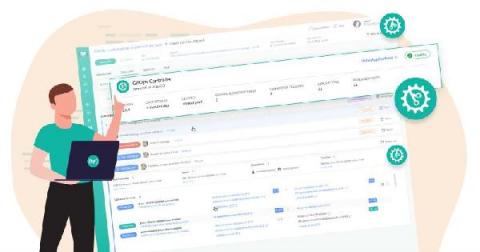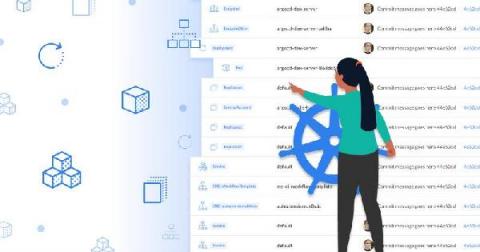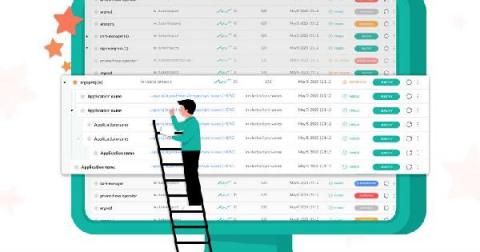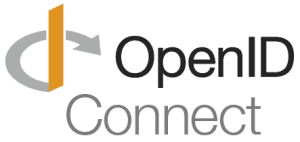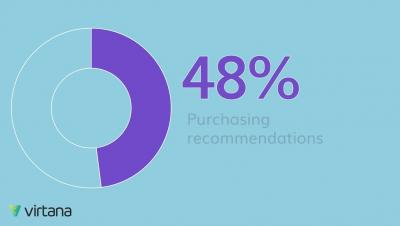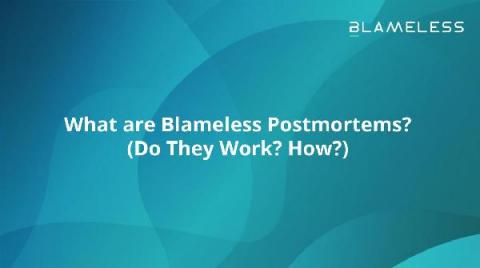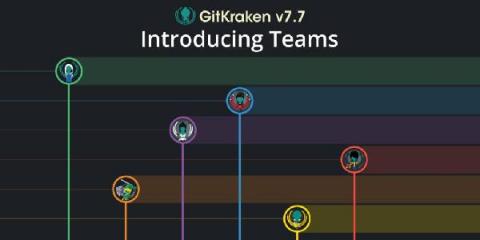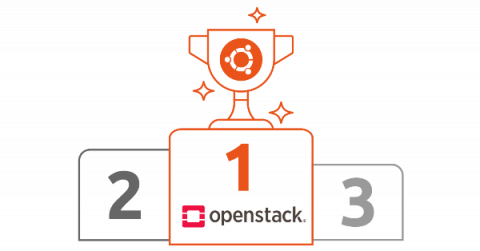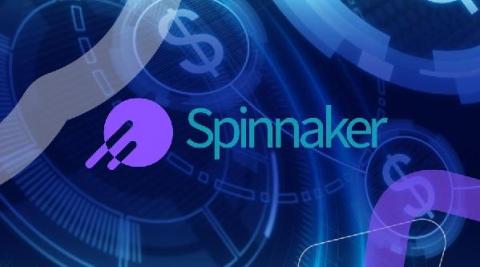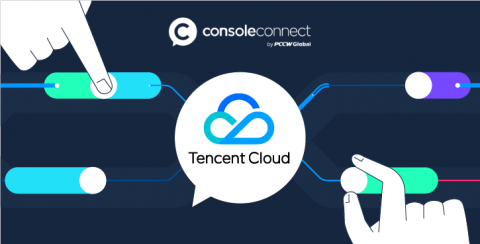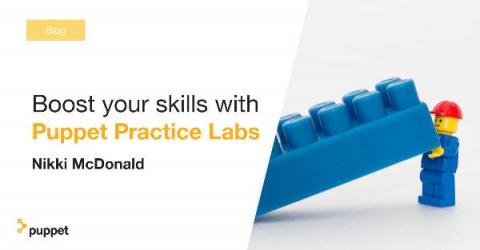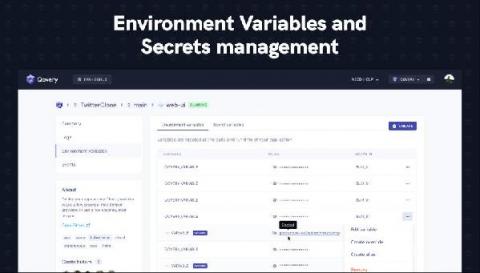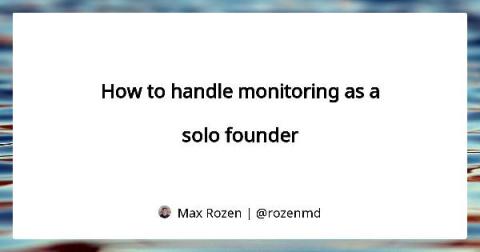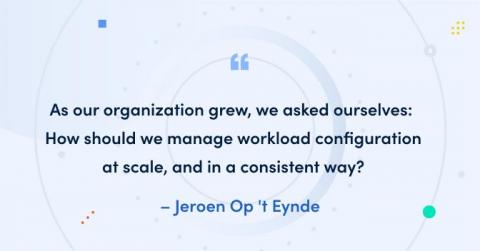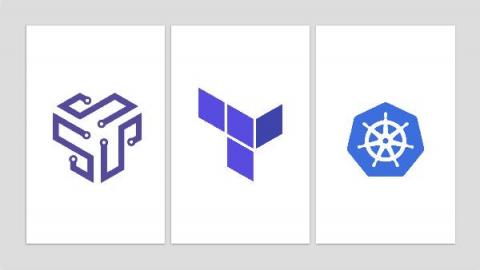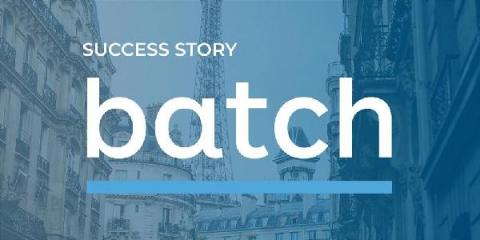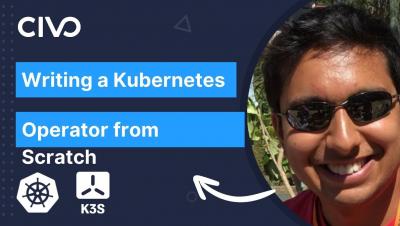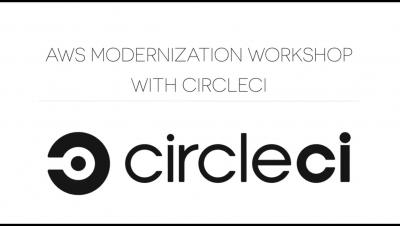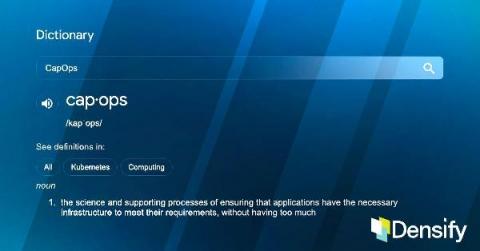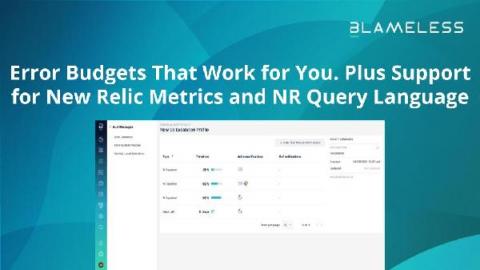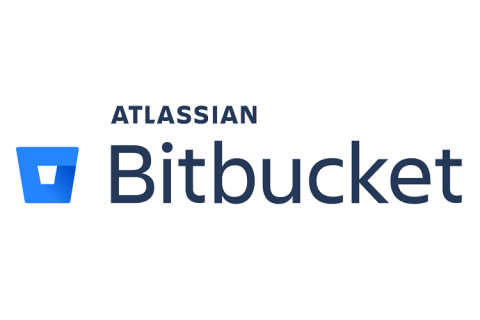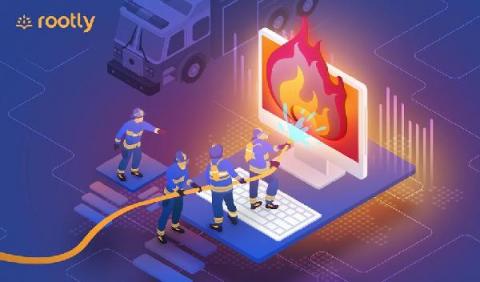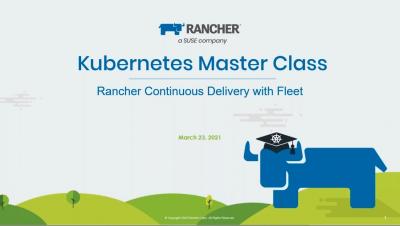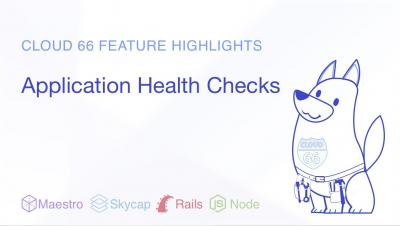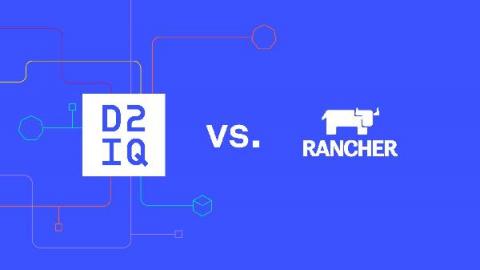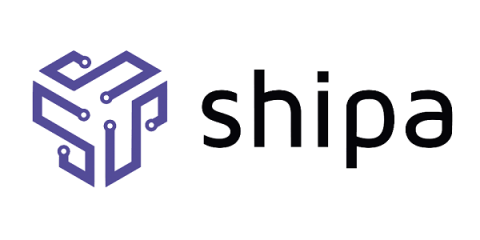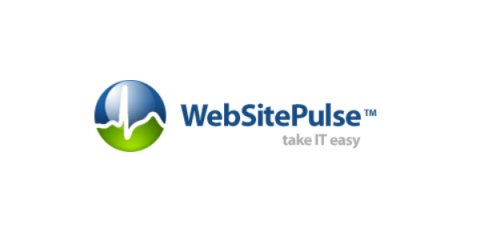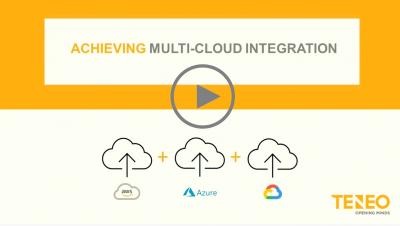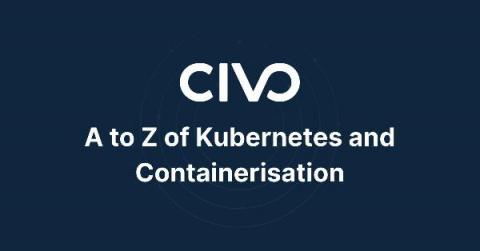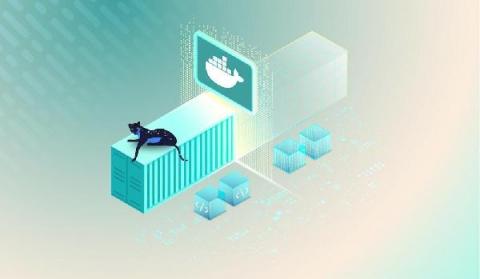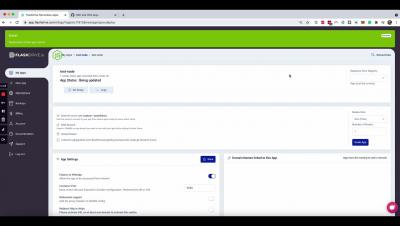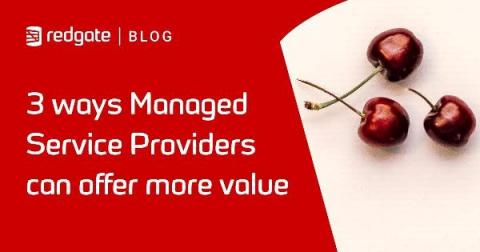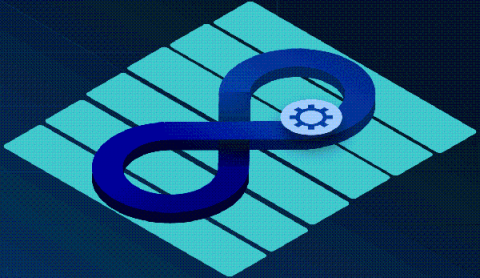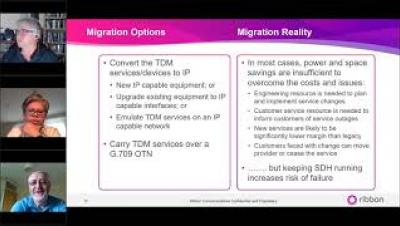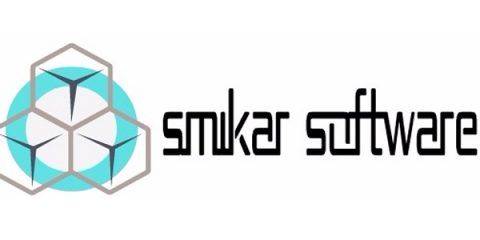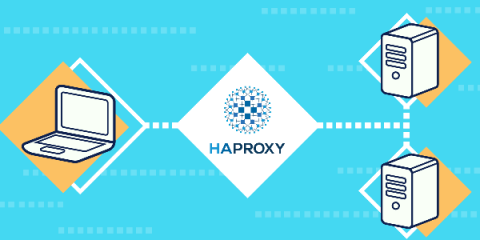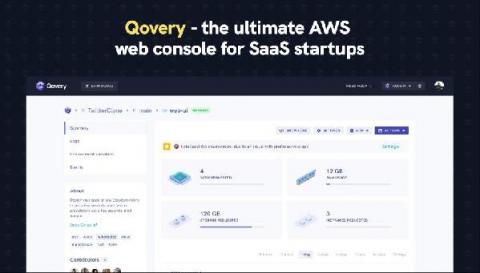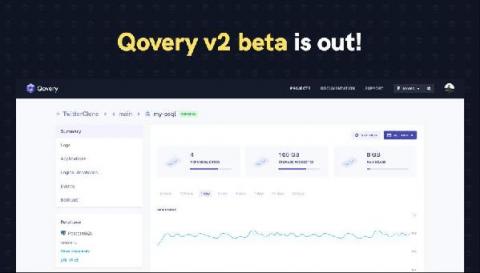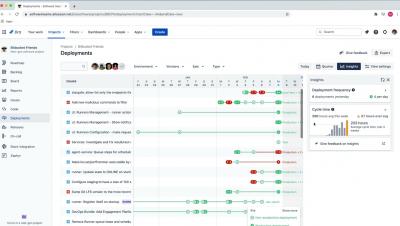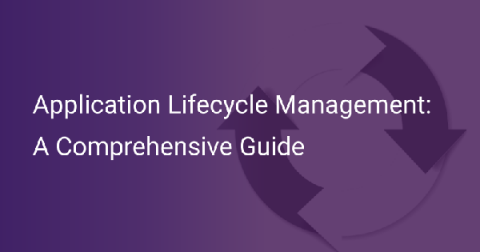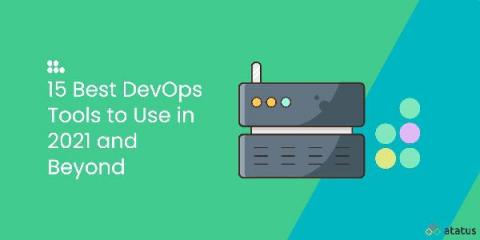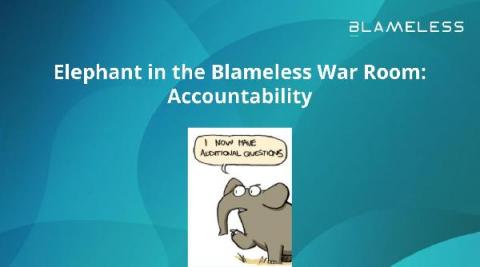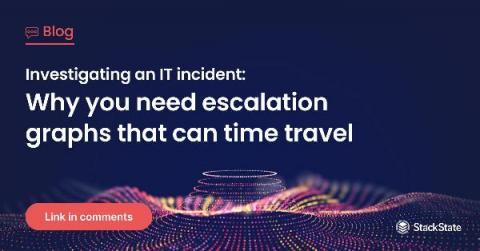Operations | Monitoring | ITSM | DevOps | Cloud
July 2021
Monitor AWS FSx audit logs with Datadog
Amazon FSx for Windows File Server is a fully managed file storage service built on Windows Server. Migrating on-premise Windows file systems to a managed service like FSx enables organizations to reduce operational overhead and take advantage of the flexibility and scalability of the cloud. But having visibility into file access activity across their environment is key for security and compliance requirements, particularly in sectors such as financial services and healthcare.
Introducing Redgate's flexible-hybrid working model
Multi Format Repositories
The Unique Reliability Engineering Requirements of Microservices
Although the fundamental concepts of site reliability engineering are the same in any environment, SREs must adapt practices to different technologies, like microservices.
CircleCI Server 3.1 Demo | Server Metrics, Backup & Restore plus Runners
How to sell your manager on CI/CD
Continuous integration seems like a smart choice, right? Why would anyone think that integrating your code into the product as soon as possible is a bad idea? Let me take you back to August 2000, when a fresh-faced young engineer was starting her first engineering role. She was given a desk, a computer, and a detailed project plan that included a release date three months in the future.
Continuous integration for Rust applications
Rust is a powerful language built on the promise of performance and reliability. With no runtime or garbage collector, it easily runs in any environment and can be integrated into any existing language or framework. With the advent of WebAssembly . Rust has become even more valued in the web development space. Rust’s seamless peering with Node.js to build highly performant functionalities has made it a delight for web developers.
Automate your releases with CircleCI and the GitHub CLI orb
Last year, GitHub announced the release of their new CLI tool . The new gh CLI wraps around the standard git cli and offers a suite of additional GitHub.com specific commands. These new commands include the ability to create a new pull request and to create a release directly from your terminal. We here on the CircleCI Community and Partner Engineering team at CircleCI use the gh pr checkout command all the time to safely test pull requests from the community (you!) on our various orbs .
Bring Xray Out of the Box with Dependency and Binary Scanning
How To Create A Cloud Center Of Excellence (CCOE)
SQL Made Simple for vSphere-powered Data Centers
Today we’re announcing a new feature of VMware Tanzu SQL called Data Management for VMware Tanzu. It offers a convenient user interface that simplifies the operation, automation, and scalability of Tanzu SQL databases (Postgres and MySQL); this same convenience is also available from a comprehensive set of APIs.
GitOps with Argo and Crossplane - Civo Online Meetup #10
Webinar: How to Survive in The Ever-Changing IT World
Kubernetes 1.22 - What's new?
This release brings 56 enhancements, an increase from 50 in Kubernetes 1.21 and 43 in Kubernetes 1.20. Of those 56 enhancements, 13 are graduating to Stable, a whopping 24 are existing features that keep improving, and 16 are completely new. It’s great to see so many new features focusing on security, like the replacement for the Pod Security Policies, a rootless mode, and enabling Seccomp by default. Also, watch out for all the deprecations and removals in this version!
Most frequently asked questions surrounding Google's Cloud Operations Sandbox
What are the Four Golden Signals?
How to Use Cargo Repositories in Artifactory
JFrog detects malicious PyPI packages stealing credit cards and injecting code
Getting Started with Continuous Packaging
Continuous Packaging (CP) is a term that we use a lot at Cloudsmith, and it is one that we think will become a cornerstone in a secure software development process.
9 Useful Tools for Software Development
Being a software developer is an amazing job with a growing job field ensuring there is great security and need in the market. But, with a great job that is highly skilled comes the demand of having a high understanding of the tools and languages needed to properly develop software efficiently.
Unlocking New Possibilities with CloudHedge and IBM Edge Computing
Edge computing is gaining huge momentum lately, and with the onset of 5G, the opportunities are endless. Moreover, it ensures or brings computation and data storage closer to where the data is generated, further enables better control, reduces costs, provides faster and actionable insights, and supports continuous operations. In fact, by 2025, 75% of enterprise data will be processed at the edge, compared to only 10% today, as predicted by Gartner.
Announcing the GA of the LogDNA Configuration API and LogDNA Terraform Provider
We’re excited to announce that our Configuration API and Terraform Provider are now generally available for all LogDNA customers. We received tremendous feedback from our public beta release and, based on that feedback, we are enabling several new features with the GA release that allow for more programmatic workflows with LogDNA. First, we are enabling Preset Alerts as a new resource that can be configured with the configuration API as well as within Terraform.
The Pain of Infrequent Deployments
Businesses Risk up to £92m Lost Revenue with Ineffective Software Delivery
Use Datadog Session Replay to view real-time user journeys
When developing large, customer-facing applications, it’s paramount to have visibility into real user behavior in order to optimize your UX. Without a direct view into what users are actually doing when navigating your app, it can be difficult to reproduce bugs and understand how aspects of your frontend design are causing user frustration and churn. With Datadog RUM’s Session Replay feature, currently available in beta, you can watch individual user sessions using a video-like interface.
How Redox quickly identify and resolve database performance issues
What is DevOps? - DevOps Bootcamp 2021
This week in the Civo DevOps bootcamp, we covered what is DevOps & why it matters. There are no prerequisites for this bootcamp. The only thing we require is your passion to learn and explore. This session was undertaken by mentors highly experienced in their respective fields. Read on to learn more about it!
Survivable Branch Appliance (SBA) for Microsoft Teams
Quick Kubeflow Pipelines with KALE, ElasticSearch and Ceph
The Quick and Easy Guide to Reformatting Code in IntelliJ
As a developer, you’re going to be making changes to a codebase. That’s why, as Harold Abelson put it, “Programs must be written for people to read.” If a codebase is not clearly formatted, debugging becomes more difficult than it should be. Though usually overlooked, little changes like reformatting and proper indentation of your code can obviously differentiate a professional developer’s code base from someone just learning.
Managing macOS resources with Puppet and Jamf
SysAdmin Day 2021: You Are Enough
JFrog and Vdoo: Better Together
From notebooks to pipelines with Kubeflow KALE
Kubeflow is the open-source machine learning toolkit on top of Kubernetes. Kubeflow translates steps in your data science workflow into Kubernetes jobs, providing the cloud-native interface for your ML libraries, frameworks, pipelines and notebooks. Read more about Kubeflow
Test internal applications with Datadog's testing tunnel and private locations
As part of your monitoring and testing strategy, you may run tests on different types of applications that are not publicly available—from local versions of production-level websites to internal applications that directly support your employees. Testing each one requires leveraging tools that allow you to verify functionality across a wide range of devices, browsers, and workflows while maintaining a secure environment.
Monitor your CI pipelines and tests with Datadog CI Visibility
Datadog CI Visibility, now available in beta, provides critical visibility into your organization’s CI/CD workflows. CI Visibility complements Datadog’s turn-key CI provider integrations and the integration of synthetic tests in CI pipelines to give you deep insight into key pipeline metrics and help you identify issues with your builds and testing.
Podcast: Break Things on Purpose | Paul Marsicovetere, Senior Cloud Infrastructure Engineer at Formidable
Break Things on Purpose is a podcast for all-things Chaos Engineering. In this episode of the Break Things on Purpose podcast, we speak with Paul Marsicovetere, Senior Cloud Infrastructure Engineer at Formidable.
Reliability Matters. Blameless is Growing with Series B $30M Funding
5 Ways to Get Valuable Insight From Your AWS Bill
The 7 Steps to Creating and Refining a Cloud Migration Strategy
Introduction to Data Management for Tanzu
What is DevOps? Civo DevOps Bootcamp 2021
Getting Started with kapp
Tanzu Tuesdays 62 - Monitoring Avail. w/Error Budget Burn Rate on Tanzu Observability w/Amber Salome
Shipa and Harness - A complete CI, CD, and Ops tool
How Converting to YAML Build Pipelines Can Help Engineering Teams Be More Efficient
Server Performance Guide: Key Metrics and How to Optimize
Everybody hates it when they have to wait for an application to load—or when an application doesn’t load at all. And if this happens with your application, you’re not just losing business but also losing brand value. Most applications today are online. So servers play a crucial role in keeping applications up and running. Application performance is directly proportional to server performance. Hence, it’s very important to monitor and improve server performance.
Deploying Rails to AWS Lambda
Lambda is an excellent option for deploying lower-traffic web services when you don't want to maintain another server and you want easy access to all of AWS's other services. In this article, Godwin Ekuma shows us step-by-step how to deploy our Rails apps to AWS Lambda.
BizTalk Migrator: What is new and what is coming (June 2021 Edition)
AWS EC2 Service Discovery with HAProxy
AWS Auto Scaling groups are a powerful tool for creating scaling plans for your application. They let you dynamically create a group of EC2 instances that will maintain a consistent and predictable level of service. HAProxy’s Data Plane API adds a cloud-native method known as Service Discovery to add or remove these instances within a backend in your proxy as scaling events occur. In this article, we’ll take a look at the steps used to integrate this functionality into your workflow.
Clojure microservices for JavaScript developers part 2
This series was co-written by Musa Barighzaai and Tyler Sullberg. In the previous post, we explored high-level differences between thinking in Clojure compared to thinking in JavaScript. We are now ready to start building our first Clojure microservice. The microservice we are going to build will be very simple. It will be an HTTP server that uses a Redis data store to count how many times a given IP address has pinged the /counter endpoint.
Clojure microservices for JavaScript developers part 3
This series was co-written by Tyler Sullberg and Musa Barighzaai. This is the third and final post in a series of posts for JavaScript developers about how to set up Clojure microservices. The previous posts were: Those previous posts are useful context, but you can clone the repo and jump into this post without reading them.
"Accelerate" your team with Sleuth
The larger your team grows and the faster your teams move, the harder it is for engineering leaders to find trust but verify moments, the moments where you should dig in and make sure your team's health is improving. Imagine a world where all your engineering tools are working together such that accurate and insightful trust but verify moments come to you. Imagine a world where you have the finest Sleuth in the world, working just for you.
The 15 Best CFO Tools For Managing Software Financials
How To - Push Device Configuration Changes
Fastest time-to-value and lowest TCO (total cost of ownership) are among the top 10 reasons that customers choose, love and continue using Netreo. Turning time-consuming administrative projects into simple tasks is one way Netreo consistently delivers superior value. But like all software solutions in use today, many Netreo features go unused or misunderstood by too many customers and would-be users.
Switching service providers? Yes, you can! - Ayyeka success story
Ayyeka connects decision makers to their remote assets, so they can make better and timely decisions. Their Industrial IoT solutions for remote monitoring enable asset owners and operators to achieve enhanced compliance and improved efficiency across the board. Hardware, software, and digital services are merged to deliver an end-to-end experience and value when connecting asset and infrastructure networks to data systems.
Supporting Azure Shared Image Gallery with Elastigroup
Images are one of the most basic, common attributes for your virtual machines (VMs), and contain the operating system which may be customized with specific installations and features. It is necessary to keep VM images organized and structured so that they are easily maintained, managed, and are accessible. Azure introduced their Shared Image Gallery to help solve this, giving users a way to manage, share and distribute custom images.
Accelerating Machine Learning with MLOps and FuseML: Part One
Building successful machine learning (ML) production systems requires a specialized re-interpretation of the traditional DevOps culture and methodologies. MLOps, short for machine learning operations, is a relatively new engineering discipline and a set of practices meant to improve the collaboration and communication between the various roles and teams that together manage the end-to-end lifecycle of machine learning projects.
Microservices Are 'Easy', Dependencies Are Hard - Itiel Shwartz (at Yalla DevOps 2021)
AI in Construction and Architecture Industry: [With Real World Use Cases]
Globally the impact of AI is increasingly growing year on year in every industry sector. Opening new scopes in construction & architecture sector, the global AImarket is estimated to grow at a CAGR of 29.4% (around) from 2019 to 2026 and is expected to reach around US$ 2.1 Billion by 2026.
Gaining a real competitive edge in managed services
Why should you use CIS Benchmarks?
In my time as a systems engineer in the insurance industry, I learned a lot about compliance programs and the challenges that organizations face to ensure infrastructure is compliant. Audits were time-consuming and handoffs between security, compliance, and infrastructure operations teams were always challenging.
Clojure microservices for JavaScript developers
This series was co-written by Tyler Sullberg and Musa Barighzaai. CircleCI is growing, which is wonderful. However, one of the growth challenges we have is that our backend is primarily written in Clojure, and few developers know Clojure. Many CircleCI engineers, including myself, have learned Clojure on the job. Before joining CircleCI, I was a JavaScript developer. As the lingua franca of software engineers, JavaScript is a relatively straightforward language to learn.
K8s Strategy: Optimizing Kubernetes Resources
High-availability connectivity for Kubernetes with dual ToR
Dual ToR (top of rack) peering provides a redundant path for customers with cluster applications that cannot tolerate service downtime or failure and require a high-availability solution. While Calico ToR connectivity has existed for some time, Calico Enterprise now supports connectivity with dual ToR switches.
Powerful Time-Based Automation Rules to Move You From Reactive to Proactive
The New Normal for Hybrid IT Solutions
PD Summit21: Adopting and Maturing to Service Ownership with PagerDuty and Rundeck
Creating Envoy WebAssembly Extensions
In the CNCF ecosystem, Envoy, an open source service proxy developed by Lyft, is a very common choice in service mesh networking. In a previous post we discussed that both Consul and Istio leverage Envoy. Were you aware that you can extend Envoy’s capabilities with WebAssembly? What is WebAssembly? WebAssembly, or Wasm as it is often abbreviated, is not so much of a programming language as it is a specification for a binary instruction format that can be run in sandboxed virtual machines.
How to encourage DBAs to embrace DevOps, rather than fear change
The Confident Commit ep. 7 | Design Your Org Structure for Fast Flow of Change with Matthew Skelton
Knative - deploy, and manage modern container-based serverless workloads - Elad Hirsch
GitLab GUI
Has GitKraken made my dev life easy? It’s been 6 months since I started at Pipefy as a Young Gun Tech. During these months, I have learned a lot and used various tools to streamline my work. For this post, I will talk about how I use the GitKraken Git GUI with GitLab, running on Ubuntu, because both tools have an awesome integration. So you can speed up your workflow just like me.
Vdoo & JFrog - Enhanced Security From Code To The Edge
Robin.io Joins Intel's Conversations in the Cloud to Talk 5G Automation
Hyper automation and the transformation of 5G networks was top of mind on a recent Conversations in the Cloud podcast sponsored by Intel that featured Robin.io’s Co-founder and CEO Partha Seetala.
What's New: Updates to Event Intelligence, Integrations, and More!
If you thought that the product announcements from PagerDuty’s largest event of the year, PagerDuty Summit 2021, was all we had in store for you, think again! We’re excited to announce that the July Release comes with a new set of updates and enhancements to the PagerDuty platform! You can learn about our latest capabilities via the Q1 PagerDuty Pulse or read below for the highlights.
Cloud Native Runtimes for VMware Tanzu Is Now GA, Plus an Integration with TriggerMesh
Back in March, during our Cloud Transformation event, we released the public beta of Cloud Native Runtimes for VMware Tanzu, which is based on Knative serving and eventing technology. Today, we have a couple of new, exciting announcements to make about Cloud Native Runtimes.
After analyzing 600,000 SQL queries, these are the top mistakes developers make - Oded Valin
Deep-dive into Open Policy Agent + Conftest + GateKeeper - Shimon Tolts & Noaa Barki
Chaos Engineering in 60 Seconds - Kubernetes Blackhole Attack
Chaos Engineering in 60 Seconds - Kubernetes Latency Attack
Chaos Engineering in 60 Seconds - Process Killer Attack
What's the Difference between Observability and Monitoring?
Dissecting DevOps - Code-to-Cloud Visibility: The Framework for DevOps Success
When You Do DevSecOps, Don't Forget the SREs
It's time to break down the silos separating SREs from security engineers.
The Race to MEC-anize the Mobile Network
Cloud 66 Feature Highlight: Multi Database Support
AI Never Sleeps in the Data Center
The Peopleware Running Cloud DevOps
Our Workflow for Security Releases using GitHub Security Advisories
We recently started using GitHub Security Advisories as part of our workflow for pushing out security releases. This post will give a brief introduction on how they work, how we use them, some of their limitations, and how we overcome them. We are still experimenting with this workflow, but the information could still be helpful for some while others might have suggestions how we could do things better.
What Is Cloud Orchestration? 8 Tools To Get You Started
How to test the latest Kubernetes 1.22 release candidate with MicroK8s
Today, the Kubernetes community made the 1.22 release candidate available, a few weeks ahead of general availability, planned for August the 4th. We invite developers, platform engineers and cloud tech enthusiasts to experiment with the new features, report back findings and bugs. MicroK8s is the easiest way to get up and running with the latest version of K8s for testing and experimentation.
2021 State of DevOps Report Finds It's Not Tech but Culture that Keeps Teams Stuck in the Middle of their DevOps Evolution
Latest Release of Wind River Studio Delivers Transformational Automation Technologies Across the Intelligent Systems Lifecycle
What is Git Bash?
As a version control system, Git is delivered within Unix style command line methods, and these commands ultimately create the backbone of Git’s software. MacOS & Linux Operating Systems have a built-in terminal shell that supports Unix-based command line features whereas Microsoft Windows Operating System command line prompt is not a Unix-based terminal.
How to mitigate DevOps tool sprawl in enterprise organizations
There’s an insidious disease increasingly afflicting DevOps teams. It begins innocuously. A team member suggests adding a new logging tool. The senior dev decides to upgrade the tooling. Then it bites. You’re spending more time navigating between windows than writing code. You’re scared to make an upgrade because it might break the toolchain. The disease is tool sprawl.
Implementing GitOps with Shipa
Choosing an API technology: gRPC, REST, GraphQL
How do you choose an API style and API technology when you start a new project? Today, if you look at API technology research such as RapidAPI Developer Survey and Insights, you’ll probably conclude that REST is the dominant force in the API landscape. While REST is certainly well-known to most developers and used in a lot of production environments, it may not be the best fit for every scenario.
The 2021 State of DevOps Report is here!
You may be as surprised as I am that the 2021 State of DevOps Report is live on the site before the annual tradition of a summer holiday (for those of us in EMEA anyway). We may or may not have done this intentionally in order to provide you with quality vacation reading.
When Disaster Strikes: Ensuring Your DRP Actually Works
SRE's Guide to Chaos & Observability
Building Reliable Applications Webinar 6 17 21
Dissecting DevOps - Measuring quality in a SaaS world: SLA, SLI, SLO
GitLab Client for Linux
Working in a DevOps field, I often find myself needing to deliver a feature or an improvement (basically a piece of code) in a relatively short amount of time, or even working in parallel on different tasks. A rather universal software development stack is comprised of: Repository and branch management in Git has never been easier. Get more control over your Git workflow with the visualization offered by GitKraken.
LaunchDarkly Integration: Feature Flag Aware Troubleshooting
Troubleshooting is the understanding of changes within the system and their impact on its health, behavior, and functionality. However, as dev environments grow exponentially more complex, the definition of “the system” itself also constantly expands. To keep pace, we constantly work to evolve Komodor’s platform and enrich it with new capabilities and integrational options.
Best TeamViewer Alternatives
The Secret to a Successful Hybrid Application Migration
What Is Network Management? A Comprehensive Introduction
Network management is the process that helps you know the working state of your network. It also enables you to fix various discovered or undiscovered network problems. In today’s networks, it’s a complicated exercise to monitor and maintain how well your network is functioning. Network management involves so many different components that you need the right people, technologies, and tools to do it well.
GitOps meets AppOps
Kubernetes allowed us to manage application deployments and infrastructure components using declarative configuration files (yes, those YAMLs that you may not be a fan of ). While dealing with a myriad of YAML files may be loved by some and hated by others, it enables us to host all these files into a Git repository, hook it up to a pipeline (Jenkins, GitLab, etc.), and have a tool apply those changes to a cluster—and voilà, you have GitOps.
3 Real-World Use Cases of Driving Data Center Automation via Integration
Data center managers are increasingly looking for ways to automate tasks to save time and improve data accuracy. In our recent Automation Workshop webinar, data center experts from eBay, MacStadium, and the University of Chicago shared their real-world use cases and insights on how they use APIs and integration to drive automation in their data centers.
CRN Recognizes Kublr on the 2021 Emerging Vendors List
Glossary of IT Monitoring and Management Terms
Due to innovations in technology and automation, technology keeps changing and transforming with time. IT monitoring and management is an important aspect of all organizations regardless of their size, location, or workload. When it comes to IT processes, issues and protocols, all concepts are universal and face similar issues everywhere. This IT management terms or IT monitoring terms glossary brings together numerous IT components, issues, protocols and processes.
Civo update - July 2021
Welcome to the Civo update for July 2021. In this edition we unveil some of the data from our Kubernetes in 2021 developer survey, a sneak peek at GitHub Copilot, and a case study on how Civo and StorageOS combine to provide cloud native storage for our Kubernetes platform.
KUBLR | Enterprise-Grade Kubernetes Management Platform
Why Would You Pay for Flyway?
Why Open Source Histograms Are The Future of Telemetry Monitoring
Latency measurements have become an important part of IT infrastructure and application monitoring. The latencies of a wide variety of events like requests, function calls, garbage collection, disk IO, system-call, CPU scheduling, etc. are of great interest to engineers operating and developing IT systems. But there are a number of technical challenges associated with managing and analyzing latency data.
Data cataloging: A giraffe's eye view
How to Accelerate Software Delivery with Hybrid Cloud CI/CD
What's New With Runbook Automation: Rundeck 3.4.1
Technical teams are under more pressure than ever to move faster, protect revenue and availability, and push mean time to resolve (MTTR) ever lower. However, teams frequently find themselves encumbered by complex, repetitive, and manual tasks, rather than innovating. When urgent incidents arise, organizations often have to wait for specific developers or subject matter experts (SMEs) to deploy a fix.
Modern Tech Stacks need Multi-Format Repositories
At Cloudsmith, using Multi-tenant repositories, we provide a simple and flexible solution to deploy and distribute your software artifacts. Multi-tenant repositories allow you to store artifacts of different formats in the same place. Organize your packages by environment, project, package type, or whatever way you see fit- we are not opinionated about how you organize your packages or containers.
Modern Tech Stacks need Multi-Format Repositories
At Cloudsmith, using Multi-format repositories, we provide a simple and flexible solution to deploy and distribute your software artifacts. Multi-format repositories allow you to store artifacts of different formats in the same place. Organize your packages by environment, project, package type, or whatever way you see fit- we are not opinionated about how you organize your packages or containers.
Cloud Platforms: Comparing AWS, Azure & Google Cloud
A cloud platform can be described as a storage place that is highly accessible, flexible, scalable and agile in all its characteristics. Users from anywhere via the internet can access their data, collaborate, share, and work together in real-time with the cloud, which means anything less than a cloud platform cannot be possible to comprehend today. The substantial dominance of cloud platforms is their authenticity and usability.
Deploy your apps on Scaleway with Qovery! Get early access now
When we launched Qovery in January 2020, our product was only supporting app deployment on Amazon Web Services (AWS). 20 months later, 5534 developers from more than 120 countries use Qovery to deploy their apps on AWS and Digital Ocean. Today, more and more European companies would love to benefits from the excellent user experience of Qovery on a European cloud service provider 🇪🇺.
FIPS certification and CIS compliance with Ubuntu
How to Establish a Culture of Secure DevOps
We’re constantly told to “Shift Left” and that Secure DevOps is the only way to have confidence in your cloud native applications. But speaking to end-users and industry colleagues, it’s clear that there are some major challenges in adopting Secure DevOps. If we read our history books, we know that DevOps wasn’t successfully adopted by buying tools, and a true cultural movement towards DevOps wasn’t established by having a small dedicated team of DevOps specialists.
Tips for Choosing the Right CI/CD Tools
Safely changing critical systems without downtime
Confidently testing in production is crucial for engineers to deliver software quickly. In this blog, we’ll discuss what our team at CircleCI has learned while changing our critical systems.
Engineering solutions to security issues
Software engineering teams have always looked for ways to increase code creation efficiency, reduce code vulnerabilities, and improve security processes. Many are now shifting security left, establishing security controls and testing — specifically integration testing — at an earlier phase in the software development lifecycle (SDLC).
Packet Capture Without "tcpdump" for Go Apps in Kubernetes
Every developer knows there are some utilities that are completely indispensable from their workflows. The programmer’s toolbelt, if you will. These toolbelts are usually different from person to person, but if there is one tool that everyone should use or at least know how to use, it is tcpdump. If you are unfamiliar, tcpdump is a tool that allows you to dump and inspect live network traffic being observed on a network interface.
Visualize live dependencies with the Request Flow Map
Modern applications are often composed of countless distributed services, which makes it difficult to understand dependencies, isolate bottlenecks, and remediate errors. Datadog APM helps you tackle this complexity by allowing you to search and analyze 100 percent of your traces in real time. But without a dynamic view of your architecture, it can still be challenging to contextualize a specific request without getting lost in the details.
Resilience, DevSecOps, and other key takeaways from RSAC 2021
For the first time in its 30-year history, the 2021 RSA Conference was a virtual-only event, and not in its usual time during the spring. But, with 20,000 registrants joining for the various sessions, it was a testament to this year’s conference theme of resilience.
Lush chooses iland and Veeam for comprehensive, cost-effective Secure Cloud Backup
A Comprehensive Cloud Migration Checklist
More and more cloud providers are emerging and spreading their business across different regions in the current times. As a result, customers want to reduce their IT workload and migrate their product or application to a cloud-based environment. The primary reason behind this is that the cloud heavily reduces the overheads of investing in IT infrastructure, hardware upgrades, maintenance, etc.
Upcoming trends in DevOps and SRE
How Traffic Engineering Can Lead to a Smooth Transition to 5G
Communications Service Providers around the world have experienced an unprecedented explosion in demand for bandwidth due to several driving forces including more video streaming, the growing popularity in areas like cloud gaming and the increasing move to the cloud to name a few.
What is Deployment Frequency?
What is Mean Time to Recovery (MTTR)?
What is Change Lead Time?
What is Change Failure Rate?
Talking about all things Relay with Kenaz Kwa
Uncover the optimization potential of your Kubernetes clusters with Ocean Insights
The evolution of Spot’s products has always been tightly aligned with our customers. Over the years, we’ve added integrations across the cloud stack, and developed new features that bring even more efficiency, automation and optimization to cloud infrastructure operations.
De-Siloing Incident Management: How to Make Reliability Engineering Everyone's Job
4 best practices for breaking down silos and establishing a culture of shared responsibility toward reliability.
Spotlight: customer success, The RealReal
Pragmatic Incident Response: 3 Lessons Learned from Failures
In my past experience as an SRE I’ve learned some valuable lessons about how to respond and learn from incidents. Declare and run retros for the small incidents. It's less stressful, and action items become much more actionable. Decrease the time it takes to analyze an incident. You'll remember more, and will learn more from the incident. Alert on pain felt by people — not computers. The only reason we declare incidents at all is because of the people on the other side of them.
Managing reusable pipeline configuration with object parameters
CircleCI pipelines are defined in configuration files using the YAML syntax, which has been widely adopted by many software tools and solutions. YAML is a human-readable declarative data structure commonly used in configuration files and in applications where data is being stored or transmitted. The data in pipeline configuration files specifies and controls how workflows and jobs are executed when triggered on the platform.
Intro to AIOps: Leveraging AI and Machine Learning in DevOps
AIOps is a DevOps strategy that brings the power of machine learning to bear on observability and system management. It’s not surprising that an increasing number of companies are now adopting this approach. AIOps first came onto the scene in 2015 (coincidentally the same year as Coralogix) and has been gaining momentum for the past half-decade. In this post, we’ll talk about what AIOps is, and why a business might want to use it for their log analytics.
Kubernetes in 2021: Where does the industry go next?
Ever since Google made Kubernetes open-source in 2014, it has enjoyed incredible growth, helping businesses of all sizes to successfully manage their containers and ultimately make the most of all that our cloud native world has to offer. Individual users certainly initially led the charge with Kubernetes, identifying issues, and generally exploring the best ways to intelligently test, manage, and deploy workloads.
New 451 Research Says Monitoring Tool Consolidation Has Become a Top Priority
DORA Metrics Explained: the four DORA metrics and how to improve them
DORA metrics come from an organization called DevOps Research and Assessment. This was a team put together by Google to survey thousands of development teams across multiple industries, to try to understand what makes a high performing team different than a low performing team. What they ended up settling on are these four metrics.
Announcing Spot PC: Simple and continuously optimized cloud desktops as a service
Speaking with thousands of organizations adopting cloud computing, it’s clear that the preferred way to consume cloud, from infrastructure to platforms to applications, is “as a service”. Customers want fully managed services, with security and SLAs built in.
Civo reviewed by respected Kubernetes guru Viktor Farcic
A couple of days ago, I was pleasantly surprised to suddenly see a tweet come in from Viktor Farcic. Viktor now works at upbound.io who developed Crossplane, and he also runs his own popular YouTube channel and co-hosts DevOps Paradox podcast. He’s well respected in the cloud native community. When I saw the tweet and noticed that Viktor had recorded a review of Civo on YouTube, I was just hoping he was kind to us...and I am pleased to say he was!
Compare Red Hat OpenShift and D2iQ's Enterprise Kubernetes Solution
As organizations look to adopt Kubernetes, they are being confronted with a growing number of Kubernetes distributions, services, and products to choose from. Navigating the Kubernetes landscape can be incredibly challenging, especially because there is no “one size fits all” solution. To help streamline the process, we compare Red Hat OpenShift and D2iQ Kubernetes Platform (DKP) across the top production-grade capabilities to consider while evaluating an enterprise Kubernetes solution.
Measure your DevSecOps maturity with Datadog's self-assessment
With DevOps teams moving at ever greater speed, it’s vital for security teams to be deeply involved at all stages of the software development and delivery lifecycle. Breaking down silos between development, operations, and security teams ensures that security considerations are not overlooked, that vulnerabilities are caught early, and that security checkpoints do not slow down the delivery process.
Podcast: Break Things on Purpose | Taylor Dolezal, Senior Developer Advocate at HashiCorp
In this episode of the Break Things on Purpose podcast, we speak with Taylor Dolezal, Senior Developer Advocate at HashiCorp.
GitOps Feature Release
It’s no secret that the software development community is starting to embrace GitOps. With the complexity of engineering modern software today, it is becoming a necessity for many companies to reassess their software development and delivery practices. When Codefresh first released GitOps 2.0 late last year, we had already planned to make it a core pillar of our platform.
Codefresh GitOps Controller
The new Codefresh GitOps dashboard gives you the perfect overview of your deployments and how they change over time. This powerful view combines information from multiple sources such as your Kubernetes services, Git Pull Requests, and JIRA issues. To help you incorporate all of this helpful information into your deployments, we have introduced the GitOps controller, a handy agent that is installed in your cluster and collects critical information about your GitOps deployments.
GitOps Current State Dashboard
At Codefresh, we are fortunate to hear from customers of all sizes and nearly every industry. A common interest is visibility into deployments and their respective environments. As a company filled with software enthusiasts and developers, this strongly resonates with our culture and our passion for empowering developers. Visibility has been an area of continuous improvement for Codefresh and something we are committed to being the best at.
Codefresh GitOps App of Apps
Microservices are powerful, but it isn’t a secret that they come with many challenges. Codefresh is acutely aware of this as we built our platform on microservices. We know what it means to maintain a fast-moving and complex software service that must remain highly available. One of the most common challenges we deal with is maintaining complex relationships at deployment time among individual microservices.
Enabling Single Sign-On with SQL Monitor
Spotlight: Serverless spark on Kubernetes
Codefresh GitOps App of Apps
Codefresh GitOps Current State Dashboard
Spotlight: a look into Predictive rebalancing
Long-term savings without long-term lock-in
Continuous updates | Dynamic config
Is your cloud cost report missing critical information?
What is a Blameless Postmortem?
GitKraken v7.7: Git for Teams
Get ready to collaborate with your team on a whole new level. While Git is amazing at tracking changes over time and giving us insight into the past, it’s not so great at helping you see what changes others are currently making or who is assigned to work on what parts of the code on any given project. Wouldn’t it be great to get better insight into what others on your team are actively working on, without ever switching applications? We could not agree more! Announcing GitKraken v7.7.
Hybrid Cloud Monitoring in Depth
Nowadays, monitoring is very important. Why is that? Because applications become more and more complicated. But not only applications—infrastructure becomes complicated too. Some companies are moving to the cloud; others are building hybrid infrastructure. And if some pieces of infrastructure are in the cloud while others are on-premises, this creates even more unclarity on how to get an overview of the infrastructure as a whole.
The 7 Steps to Creating and Refining a Cloud Migration Strategy
For a successful cloud migration, creating (and later refining), a cloud migration strategy tailored to your organization’s goals, available resources, workloads, and priorities is an absolute necessity. So here, we’ll take a look at a simple list of the areas you’ll need to quantify and understand to build that strategy and then improve it as you move forward through the cloud migration process.
Ubuntu becomes #1 OS for OpenStack deployment
One of the core values of Canonical, that we all identify with, is the mission of bringing the power of open source to everyone on the planet. From developing to developed countries. From individuals to big enterprises. From engineers to CEOs. And there is only one way to find out if we are efficient in what we do. This is community feedback. It is no different this time.
Creating an Azure DevOps CI CD pipeline for AKS
Save up to 90% on Spinnaker-deployed applications costs using Spot's Elastigroup integration
Spinnaker is an open source multi-cloud continuous delivery platform for releasing software changes with high velocity and confidence. It is a leading CI/CD tool and provides core feature sets for cluster and deployment management. Created by Netflix and Google, it combines a powerful and flexible pipeline management system with integrations to the major cloud providers. As Spinnaker developed new features and integrations, many of Spot by NetApp customers adopted it as part of their DevOps stack.
Why should my business consider private and direct connections to Tencent Cloud?
Boost your skills with Puppet Practice Labs
Puppet products and solutions are designed to make your work day easier—and learning how to use them should be just as easy. That's why we’re excited to launch Puppet Practice Labs—hands-on, always accessible, browser-based tutorials that make it simpler than ever to explore automating and managing your infrastructure and application workflow with Puppet.
Spotlight: The evolution of Spot Ocean - CD for Kubernetes applications
Spotlight digital user conference keynote 2021
Environment variables and Secrets for Qovery v2 released
I am super excited to announce that we released the support of Environment Variables and Secrets. Watch the video to see those features in action. Environment Variables and Secrets are similar. The main difference is that the Secrets are encrypted and the value can’t be revealed. Both are injected at the build and runtime of your applications. Give it a try now! Resources: I am eager to have your feedback. Put a comment here.
Self-hosting vs Managed Services: Deciding how to host your database
Like all good things in infrastructure, picking whether or not to self-host your database is full of trade-offs. On the one hand, you have the absolute freedom to do whatever it is you want with your database - whether it's adding a useful Postgres extension, or experimenting with new technologies. On the other hand, you now have to dedicate resources to keeping your database reliably online.
Customer Story: Lacework, Innovating cloud security solutions on kubernetes
Introduction to CSI Driver Internals - Andy Jeffries
Become a CI/CD expert with live DevOps training courses
At CircleCI, we’ve worked hard to build on-demand training to help our users get the most out of our platform and its capabilities. Historically, we created CircleCI Academy courses to ensure that all our customers know how to effectively use the features on our platform. Today, we’re taking a proactive approach to enhance your DevOps skills.
Best practices for consistent configuration management at scale with Tanka
At Grafana Labs, we use Tanka to deploy workloads to our Kubernetes clusters. As our organization grew, we asked ourselves: How should we manage workload configuration at scale, and in a consistent way?
How to make your app publicly accessible with Qovery v2
What Is Amazon ElastiCache? Everything You Should Know
Terraform meets AppOps
The growing adoption of microservices and Kubernetes gave rise to the need to efficiently manage, schedule, and control Kubernetes clusters, where tools like Terraform are helping many organizations address those challenges today. Terraform is a popular choice among DevOps and Platform Engineering teams as engineers can use the tool to quickly spin up and edit environments directly from their CI/CD pipelines.
FinOps: An Idea Whose Time Has Come
If you are involved in the public cloud world, you have probably heard the term FinOps thrown around, but do you know what it means? More importantly, can your organization execute on a FinOps approach to benefit from its promise to bring financial accountability to cloud spend?
Kubernetes troubleshooting with Komodor DevOps and Docker Live Show Ep 115
Remote possibility: how to help remote staff achieve better work-life balance
Unlimited Preview Environments with Kubernetes Namespaces
In our big series of Kubernetes anti-patterns, we briefly explained that static test environments are no longer needed if you are using Kubernetes. They are expensive, hard to maintain, and hard to clean up. Instead, we suggested the adoption of temporary environments that are created on demand when a pull request is opened. In this article, we will see the practical explanations on how to achieve unlimited temporary environments using Kubernetes namespaces.
Influencing DevOps without Authority - How a DevOps Engineer can advance real DevOps
Push Notifications with HAProxy Edge - The HAProxy ADN
500 customers in 15 countries. 200 Billion push notifications delivered yearly. With over five years of experience in the industry, 500 customers and over 200 billion push notifications delivered each year, Batch.com prides itself as one of the world’s leading Mobile-First Customer Engagement Platform. Their motto “Keep pushing” exemplifies this, since their platform delivers push notifications to some of the world’s most prominent names in any industry.
Writing a Kubernetes Operator from Scratch Using Kubebuilder - Dinesh Majrekar
CircleCI | AWS DevDay
The World Needs More Phrases Ending In "Ops"
A lot of people think that using the cloud makes you elastic, but cloud really only gives you the potential to be elastic. If your apps aren’t elastic, and your cloud usage doesn’t flex up and down based on activity levels, then it’s really just expensive. The same is true of containers—they don’t magically make all of your hosting problems go away, and while they have the potential to make you more agile and efficient, it isn’t that simple.
Linux kernel Livepatching
Canonical livepatch is the service and the software that enables organizations to quickly patch vulnerabilities on the Ubuntu Linux kernels. Livepatch provides uninterrupted service while reducing fire drills during high and critical severity kernel vulnerabilities. It is a complex technology and the details can be confusing, so in this post we provide a high level introduction to Ubuntu Linux kernel livepatching and the processes around it.
New Spot by NetApp Notification Center
While Spot by Netapp allows organizations to reliably and affordably run production environments on spot instances, operation teams always want to be alerted about any events of interest that occur in their environment. Over the last 5 years, Spot by NetApp customers have been using our existing notification mechanism and have shared excellent feedback for various enhancements and new capabilities.
Tanzu Talk: what is Tanzu? A quick overview of VMware's kubernetes distros and suites
Error Budgets That Work for You. Plus Support for New Relic Metrics and NR Query Language
Encountering some turbulence on Bitbucket's journey to a new platform
Rootly Announces $3.2 Million in Seed Funding from XYZ Venture Capital, 8VC, & Y Combinator
Rootly is on a mission to create a world where maintaining reliability is frictionless, delightful, and accessible to anyone. Making resolving and learning from incidents every organizations superpower.
Trying GitHub Copilot - Programming with AI
Delivering an Internal Developer Platform
Kubernetes Master Class - Disaster Recovery with Rancher and Kubernetes
Kubernetes Master Class - Scaling Kubernetes Nodes From Rancher
Kubernetes Master Class: Continuous Delivery With Rancher Fleet
Three Common Challenges to Monitoring StatsD and How to Tackle Them
StatsD is a key unifying protocol and set of tools for collecting application metrics and gaining visibility into the performance of applications. StatsD as a protocol was created by Etsy in 2011 for emitting application metrics. Soon after, the StatsD Server was developed as a tool for receiving StatsD line protocol metrics and subsequently aggregating them. While there are no official backends as part of the StatsD ecosystem, Graphite became the most commonly used.
Announcing Istio integration
Adoption of service meshes like Istio is increasing. As a result, Speedscale has developed a webassembly plugin. We extended Envoy using Rust, and no changes are required to your Istio configuration. This allows us to leverage the same sidecars that you have deployed throughout your environment to inspect API traffic. Once we are listening through Istio, the typical Speedscale magic can take place. We can use the data to build integration/performance test suites and autogenerate service mocks.
Cloud 66 Feature Highlights: Application Health Checks
Compare Rancher and D2iQ's Enterprise Kubernetes Solution
In a relatively short amount of time, Kubernetes has evolved from an internal container orchestration tool at Google to the most important cloud-native technology across the world. Its rise in popularity has made Kubernetes the preferred way to build new software experiences and modernize existing applications at scale and across clouds.
How Slack Transformed Their CI With Tracing
Slack experienced meteoric growth between 2017 and 2020—but that level of growth came with growing pains. In his talk at the 2021 o11ycon+hnycon, Frank Chen (LinkedIn), a Slack Senior Staff Engineer, detailed one of Slack’s biggest pain points in that period: flaky tests. A flaky test returns both a passing and failing result despite no changes in the code. At one point, between 2017 and 2020, Slack’s flaky test rate reached as high as 50%.
Implementing an Internal Developer Platform
In a previous post, we discussed what an Internal Developer Platform (IDP) is and some drivers behind IDP initiatives. If we go through our interactions with different organizations, we see teams embarking on the journey to build their IDPs mainly driven by the following requirements: While building an IDP may seem like an obvious choice and initiative, it is definitely not an easy task to accomplish. Building an IDP involves dealing with many moving components.
DHCP scope
It’s possible to have more than one DHCP server on the same network and still have everything work right, with no conflicts and no dropped packets or IP requests. It’s really not that hard to pull together, either, but there are some things to know, and some things to consider before we investigate that situation. For this blog, we’ll put some of the overlooked facets of DHCP in bold text. Let’s take a look.
Step-By-Step Guide for a Successful Data Center Consolidation
Whether you are downsizing your infrastructure within a single room or eliminating half of your data center sites, a data center consolidation is a complex, risk-prone project. Fortunately, you can mitigate many of the mistakes and unwelcome surprises that even the most experienced data center professionals find derailing their project and instead enjoy the many advantages of a data center consolidation.
Pros and Cons of Free Web Hosting
Selecting a web hosting service is essential for making your site go live. But if you are starting up or have a limited budget, it is usually challenging to buy a hosting service costing as much as $100 per year. Most of the paid plans don't offer a free trial. If you just want to try a blogging idea, practice designing a website, or have limited to no earnings, you can get started with free web hosting.
Pros & Cons of Working From Anywhere
Top 3 Ways Work From Anywhere Has Unknowingly Increased Your Security Risk
Achieving Multi Cloud Integration With SD WAN
Object Storage vs Block Storage - What's the difference?
At Taloflow we recently launched a way for companies migrating from AWS/GCP/Azure to 3rd party object storage providers like Storj to receive an objective TCO analysis of all the switching and storing costs associated. But what exactly is object storage - and how does it compare to block storage? For both, we will cover the technical description, benefits, and application use-cases.
A to Z of Kubernetes and Containerization
As more enterprises shift towards cloud-native, containers are proving their worth in providing developers with a flexible way to quickly get applications up and running in the cloud. Kubernetes is an integral part of this journey, offering an industry leading container orchestration platform to automate the deployment, scaling and management of containers.
The Service Mesh Landscape in 2021
A service mesh is a software infrastructure layer for controlling communication between services and usually tasked with handling all the network logic required to make microservice applications work seamlessly in a cloud-native environment. It’s the perfect solution to your communications problems.
Demo Den - Bitbucket Security by Snyk
The Essential Guide to Docker Containers
Though it has been around for some years now, Docker is still one of the most flexible, efficient, and nimble technologies for rapidly building environments to host software of all kinds—especially web-based applications.
FlashDrive.io Deploy your app from any git repository
3 ways Managed Services Providers can offer more value
CI/CD Pipeline: A Quick Guide
Top 10 Java Linters
If you want to ensure code maintainability over the long term, you should follow best coding practices and style guide rules. One of the best ways to achieve this, while also potentially finding bugs and other issues with your code, is to use a linter. Linters are best described as static code analyzers because they check your code before it even runs. They can work inside your IDE, run as part of your build process, or be inserted into your workflow anywhere in between.
JFrog And Red Hat DevSecOps Security Series
The Incident Review: 4 Incidents in Outer Space
From network problems to computer failures, a variety of incidents can disrupt operations for systems in outer space.
Demo: VMware Tanzu Standard Edition with Microsoft Azure
Lights out for SDH: What you need to know but were afraid to ask
The Confident Commit | Episode 6: Architecture meets delivery with Chris Richardson
Supporting Azure availability zone selection with Elastigroup
When designing a highly available compute environment one needs to determine the infrastructure layout required for uninterrupted application runtime even in the event of component failure. One key factor to be considered when planning for this is the geographic locations of all relevant resources. One must maintain physical separation between different compute resources with identical roles so that if a single datacenter goes down, applications remain operational.
Migrating Between Monitoring Systems
Cycle Podcast | Episode 5 "Information + Infrastructure Security" with Red Dot Management
Cloud Cost Management Tools Have A Bad Rap: Here's How We're Different
Finserv open source infrastructure powers digital transformation
Covid-19 pandemic has presented unprecedented challenges and opportunities for financial institutions to embrace digital transformation initiatives at pace and scale. Finservs are enhancing their purview of digital transformation initiatives to stay relevant and create a technology foundation that enables them to quickly bounce back from future contingencies. Finserv digital transformation is spurred by technology, and the leading technologies spurring digital transformation are open source.
5 Scenarios Where An Agile Networking Model Can Benefit Your Business
How Cloud Technology Can Help Your Business
Between 2019 and 2020, more Australian businesses have turned to cloud computing technologies. A recent survey from the Australian Bureau of Statistics found that businesses using paid cloud computing — IT services used over the internet to access software, computing power, and storage capacity — jumped to 55% from 42% in 2017 to 2018. Indeed, cloud hosting technology is more popular now than ever before.
HAProxy Configuration Basics: Load Balance Your Servers
Learn how to set up basic load balancing using the HAProxy configuration file. If you’re new to using the HAProxy load balancer, you’ve come to the right place. In this blog post, you’ll learn how to configure HAProxy for basic load balancing. I am assuming that you’ve already installed the software. If not, there are several ways to do so.
Komodor's co-founding CTO, Itiel Shwartz on the TFiR podcast
VMblog Expert Interview: Ben Ofiri, co-founding CEO of Komodor - K8s Native Troubleshooting
Qovery - the ultimate AWS web console for SaaS startups
AWS is undoubtedly one of the best Cloud service providers to run serious business out there. Reliable and cost-effective. No doubt here. But something utterly wrong with AWS is the experience on their web management console. It is so bad that thousands of developers come using Qovery every month with the only promise of - a better developer experience on top of AWS. Here are the 7 reasons why Qovery is an excellent choice for SaaS startups.
Qovery v2 beta is out
Finally, after 7 months of hard work - the Qovery team is proud to announce that the Qovery v2 beta is out and available for everyone. Take a look at our Community Call to get a complete overview of this new release. Here are the slides used during the Community Call.
Are 400GZR+ Pluggables an Embedded 800G Giant Killer?
We are now at the start of an era where 400GbE is breaking out of data centers and displacing 100GbE as the dominant client interface requiring wide-area optical transport. This is resulting in 400G lanes becoming the new building block of optical networks to transport existing 100GbE and growing 400GbE client traffic, for both metro and long haul applications.
Deployment Frequency Insight - Demo Den July 2021
Cycle Time Insight - Demo Den July 2021
Application Lifecycle Management: A Comprehensive Guide
Discipline is the key to success for all companies doing well in their field or reaching a trillion-dollar valuation. They manage the software and update it very frequently when it comes to providing services. So how are they able to manage it and keep their software updated every moment? The answer is ALM—Application Lifecycle Management. ALM includes the people, the software, the tools, and the processes included in software development, from planning to deploying it for end customers.
How to run a build using JFrog CLI with Maven integration?
How do I build a customized Artifactory Image?
How to upload generic builds using JFrog CLI?
Containers vs serverless - It's about balancing simplicity with control
Chances are if you’re a developer or part of a DevOps team you’ve had a polarizing conversation or two about containers versus serverless. In this post we recap a debate hosted by NetApp on this topic. Arguing for containers is Kevin McGrath, Chief Technology Officer, Spot by NetApp. On the side of serverless is Forrest Brazeal, Director of Content and Community at A Cloud Guru. In this post we will cover the key arguments on both sides. YouTube An error occurred.
15 Best DevOps Tools to Use in 2021 and Beyond
As you stroll through history, what changes do you notice in the culture of the medieval period, early modern period, and today, as in the modern-day? That's a simple question to answer. Their clothing, eating habits, modes of communication, and vehicles have all evolved and continue to evolve in the current era. So, what benefits may a company's cultural shift bring? You guessed it correctly!!! New DevOps tools and technology have a significant impact on cultural change.
Tanzu Standard Edition: A Technical Overview in 8 Minutes
The More You Monitor: AIOps in the Future of Monitoring
Environment preparation with Clone Templates & Image Scripts
Elephant in the Blameless War Room: Accountability
Investigating the Scene of an Incident: Using a Time-Traveling Topology to Create Escalation Graphs
Yes, time travel is possible...through data. My ability to time travel began when I started coding at age 10. Back then, all of my code ran on my own little computer. Like many ten-year-olds, I coded to create and play games. I also coded cool graphics to accompany music to impress my friends and utilities for copying. I launched my first commercial website in 1996 and made 25 guilders, which was good money for a 15-year old. Life was so easy.
5 Important DevOps Monitoring Metrics
Intercept Security Scans with Vulnerability Webhooks
Security scanning provides an opportunity to target, track, and trace vulnerabilities introduced to your packages as soon as Cloudsmith has received a complete package upload. However what happens when you want to intercept the results of a scan immediately. An early warning can make a difference when distributing vulnerable packages to hundreds, thousands, or even millions of developers, devices, or systems globally.
Why Path-to-Production Analysis Is a Must for Software Development Teams
One of the key metrics IT leaders care about is the total time it takes for a release to go from development to being live in production. The metric used to measure that duration is called the “release lead time.” It can range from days to months, depending on factors such as team agility, enterprise constraints, and interdependencies.
How to Build a Strong Open Source Community: Best Practices and Lessons Learned
When the VMware Tanzu Community Engagement team assembled three years ago, we did so with the belief that strong, sustainable community engagement is a crucial component of successful open source projects. With a mission of helping to build up and improve communities, we set out to support several VMware-originated open source projects.
Digital Twins and IoT: Unlock Deeper Process Intelligence
A digital twin is a virtual or digital replica of a physical entity. In the Industrial Internet of Things (IoT) realm, a digital twin is the dynamic virtual copy of a physical framework, a vehicle, a machine, or any device. Most often, a digital twin is developed to carry out simulations before the actual device is manufactured. Today, digital twin is taking the IoT industry by storm and the market is expected to hit $16 billion by 2023.


